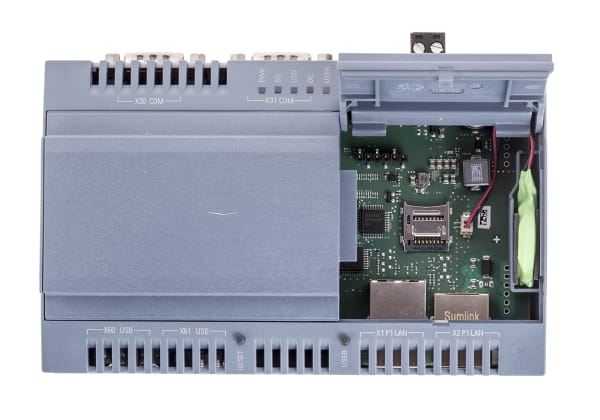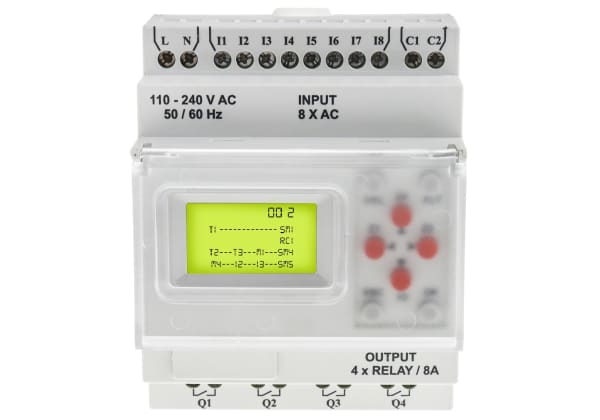- Published 5 Apr 2024
- Last Modified 5 Apr 2024
- 5 min
What’s the Role of PLCs in Automation?
Used for decades in the manufacturing industry to control machinery and provide data on operations, programmable logic controllers are the backbone of industry. Read this guide to find out about the different types of PLC automation on the market, where it is used, and the future of PLCs for industrial automation.
PLCs (programmable logic controllers) are computers used in industrial automation. The instructions given by PLC programming help engineers run and operate automated production equipment. Because PLCs can be programmed, they are capable of being reused for numerous applications rather than limited to one task. PLC automation features rugged design for manufacturing environments and is ubiquitous across the manufacturing industry. Read this guide to learn more about PLC automation, including how PLCs and PLC programming works, and where PLCs are used.
PLC Types
There is a wide variety of PLC control systems and PLC automation on the market. It includes:
- Modular PLCs. A modular PLC’s functionality can be extended via the addition of modules, complete with extra input / output units (I/O). Modular PLCs offer flexibility and the possibility of combining different I/O PLCs depending on the needs of the engineer
- Safety PLCs. Configurable safety modules can be added to modular PLCs for use in different industrial environments. A safety PLC can detect hardware faults so that any failure in the overall PLC system doesn’t result in a dangerous situation. A safety PLC is often coloured red and can raise the alarm in the event of a problem. PLC safety modules can also be locked and password-protected to prevent unauthorised access and modification
- Fixed PLCs. Fixed PLCs are designed for specific tasks. But if an engineer needs an efficient PLC for a repetitive task, they can be ideal. If the parameters of a manufacturing process are constant and don’t vary too much, fixed systems are a good choice
How Does a PLC Work?
So how do programmable logic devices work?
All PLC applications feature a CPU, inputs, a program, and outputs. The inputs are detected by the PLC. Input types vary. They can be discrete inputs such as whether a switch is ‘on’ or ‘off,’ or opened / closed readings for valves or pumps. Alternatively, they may be analogue inputs that reflect a range of values. Temperature and pressure, for example, provide analogue inputs.
Human input comes from machinery operators. It might include pushing buttons or touchscreens, making keystrokes on a keyboard, or flicking a switch. The other source of input data for a PLC might be an operator of an HMI or SCADA system.
Based on the information the PLC receives via its input, the PLC programming executes and operates output devices, which might include actuators, valves, or human-machine interface displays. PLC outputs can include audible or visual indicators such as alarms or beacons. Other outputs may be changing motor speed or opening or closing a valve.
As part of its programming for processing inputs, the PLC will also undertake a quick health check to ensure the system is working within normal parameters. Once that’s complete, the manufacturing cycle restarts.
What is the Use of PLC in Industrial Automation?
PLC systems are used in workplace automation and are a very important element of industrial control systems.
PLCs were originally used in the automotive industry. They are now widely used in discrete manufacturing to control machine tools, conveyor belts, and elevators, and in process industries such as refining oil, or producing food and beverages or pharmaceuticals. In the car industry, for example, a PLC might be used to activate a paint booth. In manufacturing, PLCs are often also used to turn alarms and lights on and off.
In the pharma sector, PLCs are used in drug manufacturing to control quality. For example, they may control temperature, flow, and pressure sensors on a production line. Using PLCs to analyse and control drug manufacturing by taking measurements at different phases helps companies ensure that strict quality and safety standards are met.
PLCs are also used to control pumps and valves in the water industry and substations and other systems on the power grid. For example, a PLC might be programmed to close a valve when water hits a certain level within a tank at a wastewater treatment works. PLCs are also used in civil engineering to control cranes and other lifting equipment, and in cement manufacturing to control the mixing of raw materials for cement production.
Why PLC is Used in Automation
Simply, PLCs are integral to modern manufacturing because they enable automation of processes that would be difficult and time-consuming to carry out manually. Their enduring success also comes from the simplicity of PLC programming languages, such as Ladder Logic. Because PLC electricals interact with SCADA and HMI systems, they are a vital link between operator and machinery.
How are PLCs in Automation Applied?
So, PLCs are applied in the automation of many industrial processes. Because PLCs connect to SCADA systems they can collect useful data about machinery and display information to the operator such as production reports and alarms. They track and display metrics such as OEE (overall equipment effectiveness) and progress of the manufacturing cycle or batch. Being able to visualise this information allows engineers to make interventions to improve the process.
Although automation for manufacturing is going through a sea change with the advent of Industry 4.0, PLCs remain the backbone of electronics for manufacturing. They are already being used to collect the data that AI and machine-learning algorithms need to improve production processes and maintenance activities.
For example, AI can now be used to assess very large amounts of data from PLCs and predict when machinery is heading for breakdown. (This is known as predictive maintenance.) Knowing when a machine is going to fail enables the engineer to intervene ahead of time. When it comes to production, data collected by PLCs can also be analysed by AI to optimise manufacturing to increase efficiency and reduce waste.
So although they’ve been around for a long time, these ruggedised industrial computers will continue to be widely used as the fourth industrial revolution develops for the control of production.
A big part of manufacturing’s past, PLCs are also set to play a huge role in its future.
Did you know that RS carries a wide range of programmable logic devices? Explore our range here.
Related Articles
Related links
- PLCs - A Complete Guide
- PLCs - Programmable Logic Controllers
- Crouzet MXD Series PLC I/O Module for Use with Industrial Automation Applications Relay Output
- RS PRO Logic Modules
- Siemens SIMATIC S7-1500 PLCs
- Allen Bradley Logic Controller
- BARTH PLCs - Programmable Logic Controllers
- Crouzet MXD Series PLC I/O Module for Use with Industrial Automation Applications Digital Output,



